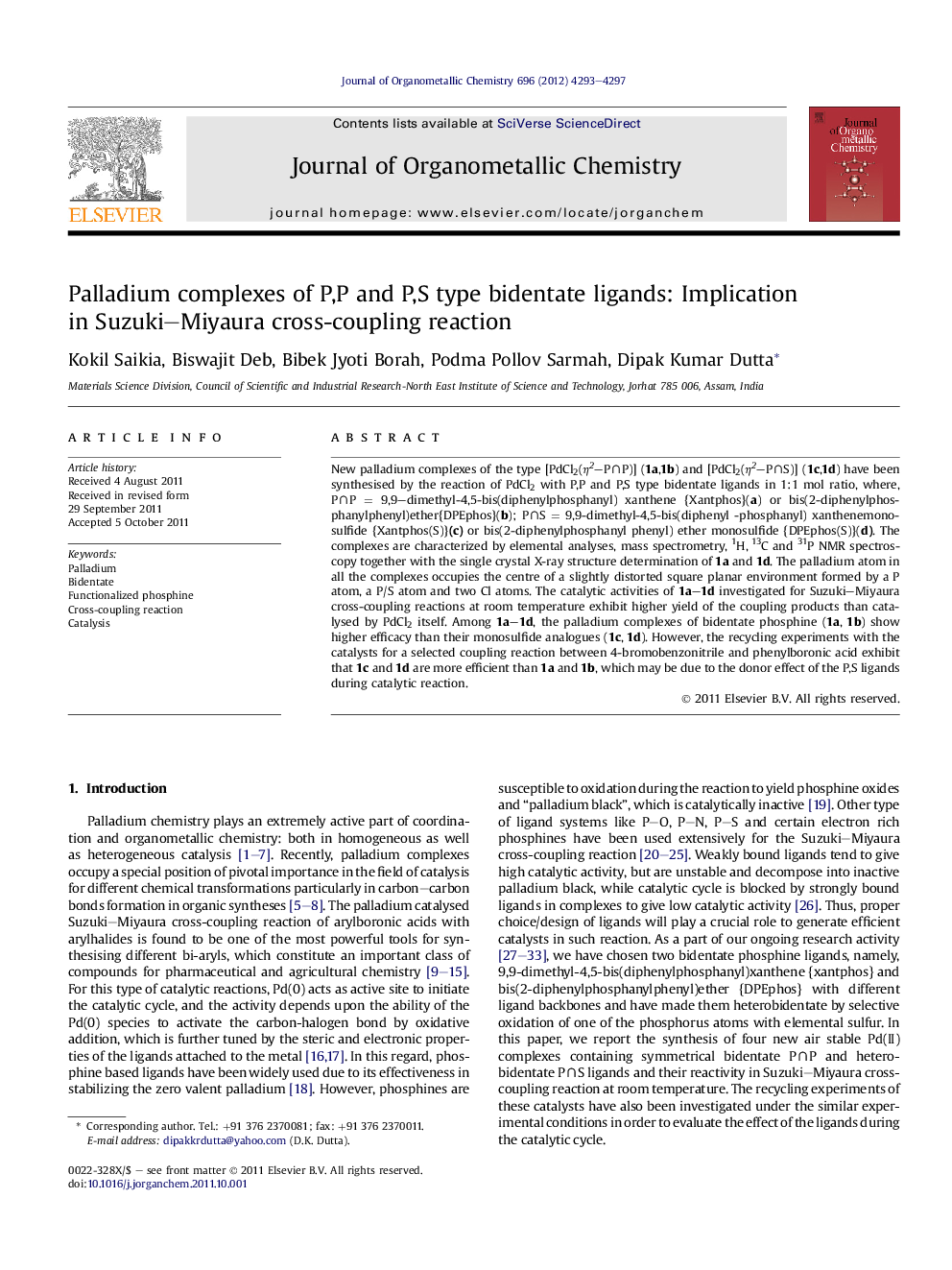| Article ID | Journal | Published Year | Pages | File Type |
|---|---|---|---|---|
| 1326503 | Journal of Organometallic Chemistry | 2012 | 5 Pages |
New palladium complexes of the type [PdCl2(η2–P∩P)] (1a,1b) and [PdCl2(η2–P∩S)] (1c,1d) have been synthesised by the reaction of PdCl2 with P,P and P,S type bidentate ligands in 1:1 mol ratio, where, P∩P = 9,9–dimethyl-4,5-bis(diphenylphosphanyl) xanthene {Xantphos}(a) or bis(2-diphenylphosphanylphenyl)ether{DPEphos}(b); P∩S = 9,9-dimethyl-4,5-bis(diphenyl -phosphanyl) xanthenemonosulfide {Xantphos(S)}(c) or bis(2-diphenylphosphanyl phenyl) ether monosulfide {DPEphos(S)}(d). The complexes are characterized by elemental analyses, mass spectrometry, 1H, 13C and 31P NMR spectroscopy together with the single crystal X-ray structure determination of 1a and 1d. The palladium atom in all the complexes occupies the centre of a slightly distorted square planar environment formed by a P atom, a P/S atom and two Cl atoms. The catalytic activities of 1a–1d investigated for Suzuki–Miyaura cross-coupling reactions at room temperature exhibit higher yield of the coupling products than catalysed by PdCl2 itself. Among 1a–1d, the palladium complexes of bidentate phosphine (1a, 1b) show higher efficacy than their monosulfide analogues (1c, 1d). However, the recycling experiments with the catalysts for a selected coupling reaction between 4-bromobenzonitrile and phenylboronic acid exhibit that 1c and 1d are more efficient than 1a and 1b, which may be due to the donor effect of the P,S ligands during catalytic reaction.
Graphical abstractFour new palladium (II) complexes of symmetrical and unsymmetrical bidentate phosphine ligands have been synthesized and characterized. The complexes show efficient catalytic activities in Suzuki–Miyaura cross-coupling reaction, which exhibit higher yield of the coupling products than PdCl2 itself.Figure optionsDownload full-size imageDownload as PowerPoint slideHighlights► Synthesis of palladium complexes of symmetrical and unsymmetrical bidentate phosphine. ► Spectroscopic and X-ray structural characterization of the synthesized complexes. ► Catalytic activity of the complexes towards the Suzuki–Miyaura cross-coupling reaction. ► Mechanistic investigation of the coupling reaction.
